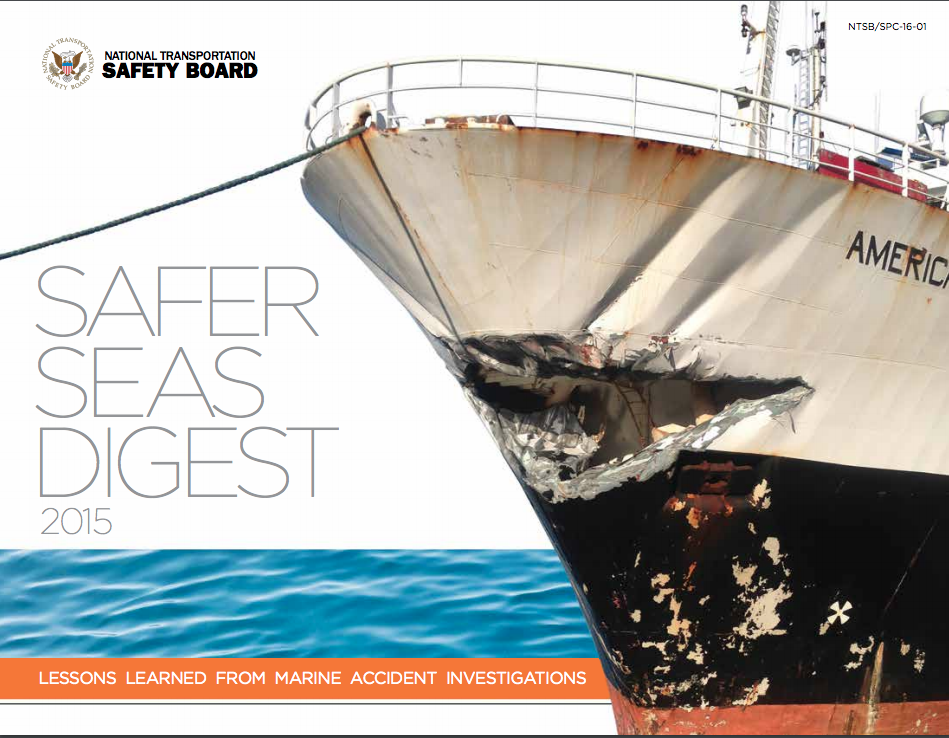In August, the National Transportation Safety Board released the 76-page “Safer Seas Digest 2015.” Like the 2013 and 2014 issues, the 2015 edition is a summary of accident investigations of commercial vessels. The previous issues have been used for crew training and safety meetings, and I’m sure the 2015 addition will also be used in that way.
Each accident includes color photos of the boat, circumstances of the accident, how the crew handled the situation, while a summary discussing the accident’s probable causes. At the end of the report are vessel particulars: the flag the vessel operates under, type of vessel, length, draft, beam and number of crew. That wasn’t part of the previous two reports and is a good addition.
The seven fishing vessel accidents include the 138-foot fish processor Juno that caught fire while tied to a pier in Gray’s Harbor, Westport, Wash.; the 71-foot 6-inch Pacific Queen that grounded out and sank near Lung Island, Alaska; the Blazer, a 73-foot Dungy boat that sank off Siletz Bay, Oregon; the 74-foot Christophe’s Joy that went down off Louisiana’s Southwest Pass (Two men died.); the 72-foot crabber Savannah Ray that grounded out on Long Island, Alaska, and was declared a total loss; the 76 foot 8-inch crabber Titan that grounded out and sank off Washington’s Cape Disappointment; and the 240-foot trawler American Dynasty that collided with the Canadian naval frigate Winnipeg in Esquimalt British Columbia.
Among the causes for the accidents are poor communication, inadequate safety training, failure to use navigation and watch alarms and fatigue. In three accidents — two sinkings and one grounding that left the vessel a total loss — fatigue was the primary cause. In two cases the captain fell asleep at the wheel. In the third instance, the captain left the bridge before he was relieved, and the crewman who was supposed to relieve him didn’t remember being woken up.
Check it out for yourself. The full report is available for free online.







